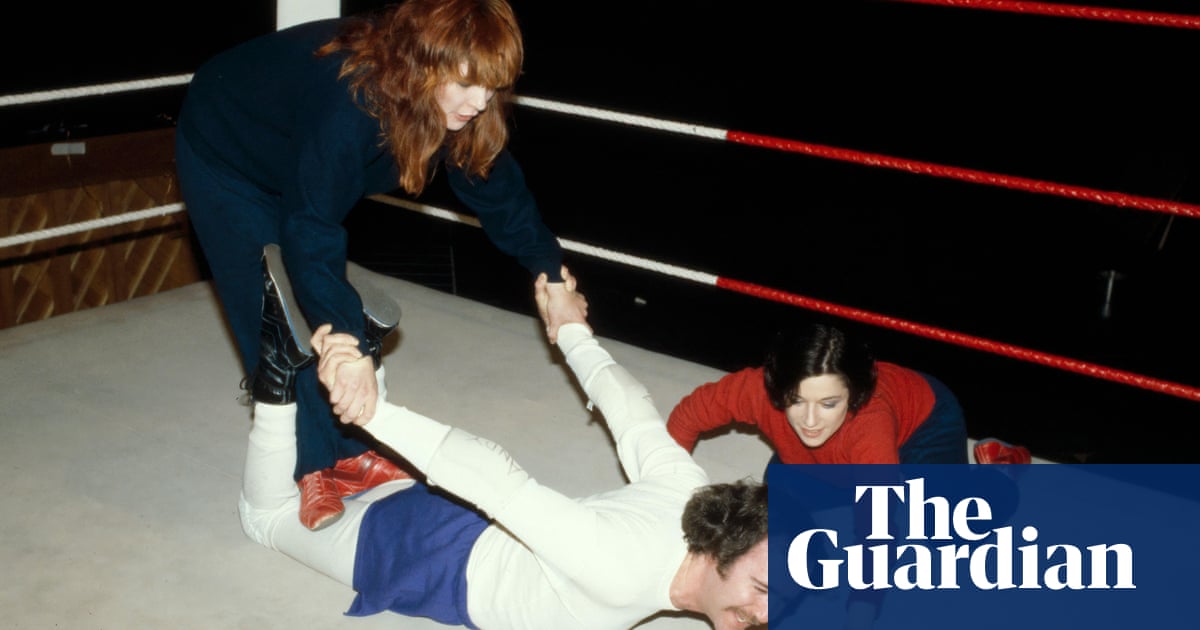
In 1969, John Smith, now one of Britain’s most revered artist film-makers, but then a foundation student at North East London Polytechnic, was sitting in a pub transfixed by a Perspex sign. “Suddenly I realised – ah! – ‘toilets’ was an anagram of TS Eliot. I thought: I must make a film about this one day.” Thirty years later, he was in another pub, his local in Leytonstone. “It had such a scummy toilet. I must have thought: this is a real wasteland.” And so he made The Waste Land (1999), an off-kilter adaptation featuring gurgling cisterns, khazi lighting, and a tired, maybe-pissed punter incanting Eliot’s line “the nymphs have departed” as a camera pans across a condom machine. It’s modernism Pete-and-Dud style.
Smith, who was expelled from his Walthamstow high school for wearing his hair too long, has carved out a singular body of work, which is about to be celebrated in a 10-week, 50-film season organised by artist-curator Stanley Schtinter. (It will feature post-screening conversations with ex-students of his; these include the director Carol Morley and Jarvis Cocker, who once asked him to direct a video for Pulp.) As a teenager he was drawn to the found-footage and ex-library educational films he found in a government-surplus camera shop in Hackney. “They had titles like Your Skin or Your Hair and Scalp, and often featured men in white coats doing experiments in laboratories. I only had a silent projector so watched them without a soundtrack. No idea what they were doing! It was quite mysterious. I was fascinated.”
At art school, Smith was taught by Marxists and radicals who had been thrown out of Hornsey College after the infamous 1968 sit-in there. He created light shows for student union performances by the likes of Captain Beefheart and his Magic Band. He also gravitated towards the avant garde world of the London Film-Makers’ Co-op, where directors such as Peter Gidal and Malcolm Le Grice were developing structural/materialist approaches to cinema. Explains Smith: “It became a rule, almost a religion, that you couldn’t make work in which the viewer could become psychologically immersed. That was illusionism. Brecht’s idea – that you should be able to engage intellectually with what you’re looking at rather than just consuming it – was still current then.”
The Girl Chewing Gum (1976), one of Smith’s best-known films, does precisely that. It begins on a busy Dalston street where a director, heard in voiceover, appears to be choreographing an urban scene. “Let’s have the man rubbing his eye,” he calls out – and a man emerges from the right side of the screen doing just that. The directions become ever more fastidious, strange, manic (“two pigeons fly past”) until he declares that he’s actually in a field 15 miles away in Letchmore Heath. But when the film cuts to that field he isn’t there.
The Girl Chewing Gum is an invitation to think about many things: the relationship between sound and image, the nature of documentary truth, how film-makers create or destroy authority. Smith’s genius is to do this without coming across as austere or academic. “My films are very manipulative and they often lead viewers up the garden path,” he admits. “But they always let you into the joke. They don’t make you feel stupid.” He recalls that, in the mid-1970s, he often used to “sit in my room on my own at night, and either drink a bottle of wine or smoke a spliff, with a pen and paper in front of me, and see if I could come up with anything. Cocteau, Monty Python, European arthouse cinema and marijuana was the inspiration for Girl Chewing Gum.”
Smith’s films are frequently set in quotidian, even mundane, London. He has, he insists, little interest in being either a documentarian or a champion of the capital. Yet among his finest achievements is The Black Tower (1985-87), based on a building near where he used to live: a comic and terrifying chronicle of a man haunted by a tower he thinks is following him around the city. In Lost Sound (1998-2001), a collaboration with Graeme Miller, he untangles spools of discarded cassette tapes from hedges and railings, rescues whatever is recorded on them, and pairs the resulting sounds with humdrum streetscapes to evoke London’s sonic unconscious. Blight (1994-96) is as important as Rachel Whiteread’s House (1993) and Patrick Keiller’s London (1994): a spider-fixated, Jocelyn Pook-soundtracked exploration of memory and loss. “I came home one day, walked into my back garden and found the house next door to me was half-demolished. On one wall was a poster for The Exorcist!”
In recent years, the political dimensions of Smith’s work have become increasingly explicit as he has brought his absurdist and formalist sensibility to the Israeli occupation of Palestine, Brexit, the pandemic. “My film ideas nearly always come from things I encounter in everyday life. When Tony Blair decided we were going to join in against Afghanistan and Iraq, those ongoing conflicts became part of my everyday consciousness. It’s in my head all the time. One of my early films, Leading Light [1975], is just me following the sunlight around my bedroom. I couldn’t do that any more. I can’t just aestheticise things and say: ‘Isn’t that pretty?’”
Still, to my mind, one of Smith’s most delightful films is the seemingly slight Steve Hates Fish (2015) in which he takes a smartphone out on to London’s Essex Road and instructs its language translation app to translate French words into English. What ensues is linguistic and syntactical mayhem. The app flounders, guesstimates, splutters semi-gibberish. “Costa for coffee lovers” becomes “Costa for Korea lovers”. A DIY shop sells “fart food”. A chippy seems to be selling produce that is “castrate fried”. Steve Hates Fish tilts reality, makes the capital look awry, cocks a snook at algorithmic authority. “The kind of films I find most engaging are films where you get disoriented and you’re not quite sure what it is you’re looking at,” Smith reflects. “Mine are about the politics of how we look at the world. They say: there’s more than one way of looking at the world.”
A retrospective of John Smith’s work is at the ICA and Close-Up Film Centre from 1 October-1 December.












